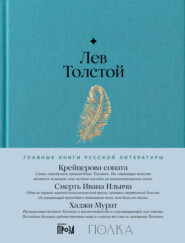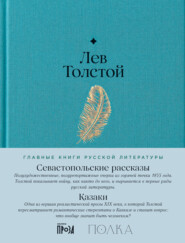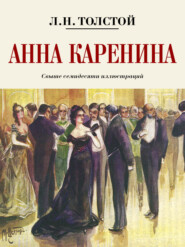По всем вопросам обращайтесь на: info@litportal.ru
(©) 2003-2024.
✖
The Kingdom of God is Within You; What is Art?
Настройки чтения
Размер шрифта
Высота строк
Поля
"Next – a picture: a yellow sea, on which swims something which is neither a ship nor a heart; on the horizon is a profile with a halo and yellow hair, which changes into a sea, in which it is lost. Some of the painters lay on their colors so thickly that the effect is something between painting and sculpture. A third exhibit was even less comprehensible: a man's profile; before him a flame and black stripes – leeches, as I was afterwards told. At last I asked a gentleman who was there what it meant, and he explained to me that the haut-relief was a symbol, and that it represented 'La Terre.' The heart swimming in a yellow sea was 'Illusion perdue,' and the gentleman with the leeches 'Le Mal.' There were also some Impressionist pictures: elementary profiles, holding some sort of flowers in their hands: in monotone, out of drawing, and either quite blurred or else marked out with wide black outlines."
This was in 1894; the same tendency is now even more strongly defined, and we have Böcklin, Stuck, Klinger, Sasha Schneider, and others.
The same thing is taking place in the drama. The play-writers give us an architect who, for some reason, has not fulfilled his former high intentions, and who consequently climbs on to the roof of a house he has erected, and tumbles down head foremost; or an incomprehensible old woman (who exterminates rats), and who, for an unintelligible reason, takes a poetic child to the sea, and there drowns him; or some blind men who, sitting on the seashore, for some reason always repeat one and the same thing; or a bell of some kind, which flies into a lake, and there rings.
And the same is happening in music – in that art which, more than any other, one would have thought, should be intelligible to everybody.
An acquaintance of yours, a musician of repute, sits down to the piano and plays you what he says is a new composition of his own, or of one of the new composers. You hear the strange, loud sounds, and admire the gymnastic exercises performed by his fingers; and you see that the performer wishes to impress upon you that the sounds he is producing express various poetic strivings of the soul. You see his intention, but no feeling whatever is transmitted to you except weariness. The execution lasts long, or at least it seems very long to you, because you do not receive any clear impression, and involuntarily you remember the words of Alphonse Karr, "Plus ça va vite, plus ça dure longtemps."[116 - The quicker it goes the longer it lasts.] And it occurs to you that perhaps it is all a mystification; perhaps the performer is trying you – just throwing his hands and fingers wildly about the keyboard in the hope that you will fall into the trap and praise him, and then he will laugh and confess that he only wanted to see if he could hoax you. But when at last the piece does finish, and the perspiring and agitated musician rises from the piano evidently anticipating praise, you see that it was all done in earnest.
The same thing takes place at all the concerts, with pieces by Liszt, Wagner, Berlioz, Brahms, and (newest of all) Richard Strauss, and the numberless other composers of the new school, who unceasingly produce opera after opera, symphony after symphony, piece after piece.
The same is occurring in a domain in which it seemed hard to be unintelligible, – in the sphere of novels and short stories.
Read "Là Bas," by Huysmans, or some of Kipling's short stories, or "L'Annonciateur," by Villiers de l'Isle Adam in his "Contes Cruels," etc., and you will find them not only "abscons" (to use a word adopted by the new writers), but absolutely unintelligible both in form and in substance. Such, again, is the work by E. Morel, "Terre Promise," now appearing in the Revue Blanche, and such are most of the new novels. The style is very high-flown, the feelings seem to be most elevated, but you can't make out what is happening, to whom it is happening, and where it is happening. And such is the bulk of the young art of our time.
People who grew up in the first half of this century, admiring Goethe, Schiller, Musset, Hugo, Dickens, Beethoven, Chopin, Raphael, da Vinci, Michael Angelo, Delaroche, being unable to make head or tail of this new art, simply attribute its productions to tasteless insanity, and wish to ignore them. But such an attitude toward this new art is quite unjustifiable, because, in the first place, that art is spreading more and more, and has already conquered for itself a firm position in society, similar to the one occupied by the Romanticists in the third decade of this century; and, secondly and chiefly, because, if it is permissible to judge in this way of the productions of the latest form of art, called by us Decadent art, merely because we do not understand it, then remember there are an enormous number of people, – all the laborers, and many of the non-laboring folk, – who, in just the same way, do not comprehend those productions of art which we consider admirable: the verses of our favorite artists – Goethe, Schiller, and Hugo; the novels of Dickens, the music of Beethoven and Chopin, the pictures of Raphael, Michael Angelo, da Vinci, etc.
If I have a right to think that great masses of people do not understand and do not like what I consider undoubtedly good because they are not sufficiently developed, then I have no right to deny that perhaps the reason why I cannot understand and cannot like the new productions of art is merely that I am still insufficiently developed to understand them. If I have a right to say that I, and the majority of people who are in sympathy with me, do not understand the productions of the new art, simply because there is nothing in it to understand, and because it is bad art, then, with just the same right, the still larger majority, the whole laboring mass, who do not understand what I consider admirable art, can say that what I reckon as good art is bad art, and there is nothing in it to understand.
I once saw the injustice of such condemnation of the new art with especial clearness, when, in my presence, a certain poet, who writes incomprehensible verses, ridiculed incomprehensible music with gay self-assurance; and, shortly afterwards, a certain musician, who composes incomprehensible symphonies, laughed at incomprehensible poetry with equal self-confidence. I have no right, and no authority, to condemn the new art on the ground that I (a man educated in the first half of the century) do not understand it; I can only say that it is incomprehensible to me. The only advantage the art I acknowledge has over the Decadent art, lies in the fact that the art I recognize is comprehensible to a somewhat larger number of people than the present-day art.
The fact that I am accustomed to a certain exclusive art, and can understand it, but am unable to understand another still more exclusive art, does not give me a right to conclude that my art is the real true art, and that the other one, which I do not understand, is an unreal, a bad art. I can only conclude that art, becoming ever more and more exclusive, has become more and more incomprehensible to an ever increasing number of people, and that, in this its progress toward greater and greater incomprehensibility (on one level of which I am standing, with the art familiar to me), it has reached a point where it is understood by a very small number of the elect, and the number of these chosen people is ever becoming smaller and smaller.
As soon as ever the art of the upper classes separated itself from universal art, a conviction arose that art may be art and yet be incomprehensible to the masses. And as soon as this position was admitted, it had inevitably to be admitted also that art may be intelligible only to the very smallest number of the elect, and, eventually, to two, or to one, of our nearest friends, or to oneself alone. Which is practically what is being said by modern artists: "I create and understand myself, and if any one does not understand me, so much the worse for him."
The assertion that art may be good art, and at the same time incomprehensible to a great number of people, is extremely unjust, and its consequences are ruinous to art itself; but at the same time it is so common and has so eaten into our conceptions, that it is impossible sufficiently to elucidate all the absurdity of it.
Nothing is more common than to hear it said of reputed works of art, that they are very good but very difficult to understand. We are quite used to such assertions, and yet to say that a work of art is good, but incomprehensible to the majority of men, is the same as saying of some kind of food that it is very good, but that most people can't eat it. The majority of men may not like rotten cheese or putrefying grouse – dishes esteemed by people with perverted tastes; but bread and fruit are only good when they please the majority of men. And it is the same with art. Perverted art may not please the majority of men, but good art always pleases every one.
It is said that the very best works of art are such that they cannot be understood by the mass, but are accessible only to the elect who are prepared to understand these great works. But if the majority of men do not understand, the knowledge necessary to enable them to understand should be taught and explained to them. But it turns out that there is no such knowledge, that the works cannot be explained, and that those who say the majority do not understand good works of art, still do not explain those works, but only tell us that, in order to understand them, one must read, and see, and hear these same works over and over again. But this is not to explain, it is only to habituate! And people may habituate themselves to anything, even to the very worst things. As people may habituate themselves to bad food, to spirits, tobacco, and opium, just in the same way they may habituate themselves to bad art – and that is exactly what is being done.
Moreover, it cannot be said that the majority of people lack the taste to esteem the highest works of art. The majority always have understood, and still understand, what we also recognize as being the very best art: the epic of Genesis, the gospel parables, folk-legends, fairy-tales, and folk-songs, are understood by all. How can it be that the majority has suddenly lost its capacity to understand what is high in our art?
Of a speech it may be said that it is admirable, but incomprehensible to those who do not know the language in which it is delivered. A speech delivered in Chinese may be excellent, and may yet remain incomprehensible to me if I do not know Chinese; but what distinguishes a work of art from all other mental activity is just the fact that its language is understood by all, and that it infects all without distinction. The tears and laughter of a Chinese infect me just as the laughter and tears of a Russian; and it is the same with painting and music and poetry, when it is translated into a language I understand. The songs of a Kirghiz or of a Japanese touch me, though in a lesser degree than they touch a Kirghiz or a Japanese. I am also touched by Japanese painting, Indian architecture, and Arabian stories. If I am but little touched by a Japanese song and a Chinese novel, it is not that I do not understand these productions, but that I know and am accustomed to higher works of art. It is not because their art is above me. Great works of art are only great because they are accessible and comprehensible to every one. The story of Joseph, translated into the Chinese language, touches a Chinese. The story of Sakya Muni touches us. And there are, and must be, buildings, pictures, statues, and music of similar power. So that, if art fails to move men, it cannot be said that this is due to the spectators' or hearers' lack of understanding; but the conclusion to be drawn may and should be, that such art is either bad art, or is not art at all.
Art is differentiated from activity of the understanding, which demands preparation and a certain sequence of knowledge (so that one cannot learn trigonometry before knowing geometry), by the fact that it acts on people independently of their state of development and education, that the charm of a picture, sounds, or of forms, infects any man whatever his plane of development.
The business of art lies just in this, – to make that understood and felt which, in the form of an argument, might be incomprehensible and inaccessible. Usually it seems to the recipient of a truly artistic impression that he knew the thing before but had been unable to express it.
And such has always been the nature of good, supreme art; the "Iliad," the "Odyssey," the stories of Isaac, Jacob, and Joseph, the Hebrew prophets, the psalms, the gospel parables, the story of Sakya Muni, and the hymns of the Vedas: all transmit very elevated feelings, and are nevertheless quite comprehensible now to us, educated or uneducated, as they were comprehensible to the men of those times, long ago, who were even less educated than our laborers. People talk about incomprehensibility; but if art is the transmission of feelings flowing from man's religious perception, how can a feeling be incomprehensible which is founded on religion, i. e. on man's relation to God? Such art should be, and has actually always been, comprehensible to everybody, because every man's relation to God is one and the same. And therefore the churches and the images in them were always comprehensible to every one. The hindrance to understanding the best and highest feelings (as is said in the gospel) does not at all lie in deficiency of development or learning, but, on the contrary, in false development and false learning. A good and lofty work of art may be incomprehensible, but not to simple, unperverted peasant laborers (all that is highest is understood by them) – it may be, and often is, unintelligible to erudite, perverted people destitute of religion. And this continually occurs in our society, in which the highest feelings are simply not understood. For instance, I know people who consider themselves most refined, and who say that they do not understand the poetry of love to one's neighbor, of self-sacrifice, or of chastity.
So that good, great, universal, religious art may be incomprehensible to a small circle of spoilt people, but certainly not to any large number of plain men.
Art cannot be incomprehensible to the great masses only because it is very good – as artists of our day are fond of telling us. Rather we are bound to conclude that this art is unintelligible to the great masses only because it is very bad art, or even is not art at all. So that the favorite argument (naïvely accepted by the cultured crowd), that in order to feel art one has first to understand it (which really only means habituate oneself to it), is the truest indication that what we are asked to understand by such a method is either very bad, exclusive art, or is not art at all.
People say that works of art do not please the people because they are incapable of understanding them. But if the aim of works of art is to infect people with the emotion the artist has experienced, how can one talk about not understanding?
A man of the people reads a book, sees a picture, hears a play or a symphony, and is touched by no feeling. He is told that this is because he cannot understand. People promise to let a man see a certain show; he enters and sees nothing. He is told that this is because his sight is not prepared for this show. But the man well knows that he sees quite well, and if he does not see what people promised to show him, he only concludes (as is quite just) that those who undertook to show him the spectacle have not fulfilled their engagement. And it is perfectly just for a man who does feel the influence of some works of art to come to this conclusion concerning artists who do not, by their works, evoke feeling in him. To say that the reason a man is not touched by my art is because he is still too stupid, besides being very self-conceited and also rude, is to reverse the rôles, and for the sick to send the hale to bed.
Voltaire said that "Tous les genres sont bons, hors le genre ennuyeux;"[117 - All styles are good except the wearisome style.] but with even more right one may say of art that Tous les genres sont bons, hors celui qu'on ne comprend pas, or qui ne produit pas son effet,[118 - All styles are good except that which is not understood, or which fails to produce its effect.] for of what value is an article which fails to do that for which it was intended?
Mark this above all: if only it be admitted that art may be art and yet be unintelligible to any one of sound mind, there is no reason why any circle of perverted people should not compose works tickling their own perverted feelings and comprehensible to no one but themselves, and call it "art," as is actually being done by the so-called Decadents.
The direction art has taken may be compared to placing on a large circle other circles, smaller and smaller, until a cone is formed, the apex of which is no longer a circle at all. That is what has happened to the art of our times.
CHAPTER XI
Becoming ever poorer and poorer in subject-matter, and more and more unintelligible in form, the art of the upper classes, in its latest productions, has even lost all the characteristics of art, and has been replaced by imitations of art. Not only has upper-class art, in consequence of its separation from universal art, become poor in subject-matter, and bad in form, i. e. ever more and more unintelligible, it has, in course of time, ceased even to be art at all, and has been replaced by counterfeits.
This has resulted from the following causes: Universal art arises only when some one of the people, having experienced a strong emotion, feels the necessity of transmitting it to others. The art of the rich classes, on the other hand, arises not from the artist's inner impulse, but chiefly because people of the upper classes demand amusement and pay well for it. They demand from art the transmission of feelings that please them, and this demand artists try to meet. But it is a very difficult task; for people of the wealthy classes, spending their lives in idleness and luxury, desire to be continually diverted by art; and art, even the lowest, cannot be produced at will, but has to generate spontaneously in the artist's inner self. And therefore, to satisfy the demands of people of the upper classes, artists have had to devise methods of producing imitations of art. And such methods have been devised.
These methods are those of (1) borrowing, (2) imitating, (3) striking (effects), and (4) interesting.
The first method consists in borrowing whole subjects, or merely separate features, from former works recognized by every one as being poetical, and in so re-shaping them, with sundry additions, that they should have an appearance of novelty.
Such works, evoking in people of a certain class memories of artistic feelings formerly experienced, produce an impression similar to art, and, provided only that they conform to other needful conditions, they pass for art among those who seek for pleasure from art. Subjects borrowed from previous works of art are usually called poetical subjects. Objects and people thus borrowed are called poetical objects and people. Thus, in our circle, all sorts of legends, sagas, and ancient traditions are considered poetical subjects. Among poetical people and objects we reckon maidens, warriors, shepherds, hermits, angels, devils of all sorts, moonlight, thunder, mountains, the sea, precipices, flowers, long hair, lions, lambs, doves, and nightingales. In general, all those objects are considered poetical which have been most frequently used by former artists in their productions.
Some forty years ago a stupid but highly cultured —ayant beaucoup d'acquis– lady (since deceased) asked me to listen to a novel written by herself. It began with a heroine who, in a poetic white dress, and with poetically flowing hair, was reading poetry near some water in a poetic wood. The scene was in Russia, but suddenly from behind the bushes the hero appears, wearing a hat with a feather à la Guillaume Tell (the book specially mentioned this) and accompanied by two poetical white dogs. The authoress deemed all this highly poetical, and it might have passed muster if only it had not been necessary for the hero to speak. But as soon as the gentleman in the hat à la Guillaume Tell began to converse with the maiden in the white dress, it became obvious that the authoress had nothing to say, but had merely been moved by poetic memories of other works, and imagined that by ringing the changes on those memories she could produce an artistic impression. But an artistic impression, i. e. infection, is only received when an author has, in the manner peculiar to himself, experienced the feeling which he transmits, and not when he passes on another man's feeling previously transmitted to him. Such poetry from poetry cannot infect people, it can only simulate a work of art, and even that only to people of perverted æsthetic taste. The lady in question being very stupid and devoid of talent, it was at once apparent how the case stood; but when such borrowing is resorted to by people who are erudite and talented and have cultivated the technique of their art, we get those borrowings from the Greek, the antique, the Christian or mythological world which have become so numerous, and which, particularly in our day, continue to increase and multiply, and are accepted by the public as works of art, if only the borrowings are well mounted by means of the technique of the particular art to which they belong.
As a characteristic example of such counterfeits of art in the realm of poetry, take Rostand's "Princesse Lointaine," in which there is not a spark of art, but which seems very poetical to many people, and probably also to its author.
The second method of imparting a semblance of art is that which I have called imitating. The essence of this method consists in supplying details accompanying the thing described or depicted. In literary art this method consists in describing, in the minutest details, the external appearance, the faces, the clothes, the gestures, the tones, and the habitations of the characters represented, with all the occurrences met with in life. For instance, in novels and stories, when one of the characters speaks, we are told in what voice he spoke, and what he was doing at the time. And the things said are not given so that they should have as much sense as possible, but, as they are in life, disconnectedly, and with interruptions and omissions. In dramatic art, besides such imitation of real speech, this method consists in having all the accessories and all the people just like those in real life. In painting, this method assimilates painting to photography, and destroys the difference between them. And, strange to say, this method is used also in music: music tries to imitate, not only by its rhythm but also by its very sounds, the sounds which in real life accompany the thing it wishes to represent.
The third method is by action, often purely physical, on the outer senses. Work of this kind is said to be "striking," "effectful." In all arts these effects consist chiefly in contrasts; in bringing together the terrible and the tender, the beautiful and the hideous, the loud and the soft, darkness and light, the most ordinary and the most extraordinary. In verbal art, besides effects of contrast, there are also effects consisting in the description of things that have never before been described. These are usually pornographic details evoking sexual desire, or details of suffering and death evoking feelings of horror, as, for instance, when describing a murder, to give a detailed medical account of the lacerated tissues, of the swellings, of the smell, quantity, and appearance of the blood. It is the same in painting: besides all kinds of other contrasts, one is coming into vogue which consists in giving careful finish to one object and being careless about all the rest. The chief and usual effects in painting are effects of light and the depiction of the horrible. In the drama, the most common effects, besides contrasts, are tempests, thunder, moonlight, scenes at sea or by the seashore, changes of costume, exposure of the female body, madness, murders, and death generally: the dying person exhibiting in detail all the phases of agony. In music the most usual effects are a crescendo, passing from the softest and simplest sounds to the loudest and most complex crash of the full orchestra; a repetition of the same sounds arpeggio in all the octaves and on various instruments; or that the harmony, tone, and rhythm be not at all those naturally flowing from the course of the musical thought, but such as strike one by their unexpectedness. Besides these, the commonest effects in music are produced in a purely physical manner by strength of sound, especially in an orchestra.
Such are some of the most usual effects in the various arts, but there yet remains one common to them all; namely, to convey by means of one art what it would be natural to convey by another: for instance, to make music describe (as is done by the programme music of Wagner and his followers), or to make painting, the drama, or poetry, induce a frame of mind (as is aimed at by all the Decadent art).
The fourth method is that of interesting (that is, absorbing the mind) in connection with works of art. The interest may lie in an intricate plot – a method till quite recently much employed in English novels and French plays, but now going out of fashion and being replaced by authenticity, i. e. by detailed description of some historical period or some branch of contemporary life. For example, in a novel, interestingness may consist in a description of Egyptian or Roman life, the life of miners, or that of the clerks in a large shop. The reader becomes interested and mistakes this interest for an artistic impression. The interest may also depend on the very method of expression; a kind of interest that has now come much into use. Both verse and prose, as well as pictures, plays, and music, are constructed so that they must be guessed like riddles, and this process of guessing again affords pleasure and gives a semblance of the feeling received from art.
It is very often said that a work of art is very good because it is poetic, or realistic, or striking, or interesting; whereas not only can neither the first, nor the second, nor the third, nor the fourth of these attributes supply a standard of excellence in art, but they have not even anything in common with art.
Poetic – means borrowed. All borrowing merely recalls to the reader, spectator, or listener some dim recollection of artistic impressions they have received from previous works of art, and does not infect them with feeling which the artist has himself experienced. A work founded on something borrowed, like Goethe's "Faust," for instance, may be very well executed and be full of mind and every beauty, but because it lacks the chief characteristic of a work of art – completeness, oneness, the inseparable unity of form and contents expressing the feeling the artist has experienced – it cannot produce a really artistic impression. In availing himself of this method, the artist only transmits the feeling received by him from a previous work of art; therefore every borrowing, whether it be of whole subjects, or of various scenes, situations, or descriptions, is but a reflection of art, a simulation of it, but not art itself. And therefore, to say that a certain production is good because it is poetic —i. e. resembles a work of art – is like saying of a coin that it is good because it resembles real money.
Equally little can imitation, realism, serve, as many people think, as a measure of the quality of art. Imitation cannot be such a measure; for the chief characteristic of art is the infection of others with the feelings the artist has experienced, and infection with a feeling is not only not identical with description of the accessories of what is transmitted, but is usually hindered by superfluous details. The attention of the receiver of the artistic impression is diverted by all these well-observed details, and they hinder the transmission of feeling even when it exists.
To value a work of art by the degree of its realism, by the accuracy of the details reproduced, is as strange as to judge of the nutritive quality of food by its external appearance. When we appraise a work according to its realism, we only show that we are talking, not of a work of art, but of its counterfeit.
Neither does the third method of imitating art – by the use of what is striking or effectual – coincide with real art any better than the two former methods; for in effectfulness – the effects of novelty, of the unexpected, of contrasts, of the horrible – there is no transmission of feeling, but only an action on the nerves. If an artist were to paint a bloody wound admirably, the sight of the wound would strike me, but it would not be art. One prolonged note on a powerful organ will produce a striking impression, will often even cause tears, but there is no music in it, because no feeling is transmitted. Yet such physiological effects are constantly mistaken for art by people of our circle, and this not only in music, but also in poetry, painting, and the drama. It is said that art has become refined. On the contrary, thanks to the pursuit of effectfulness, it has become very coarse. A new piece is brought out and accepted all over Europe, such, for instance, as "Hannele," in which play the author wishes to transmit to the spectators pity for a persecuted girl. To evoke this feeling in the audience by means of art, the author should either make one of the characters express this pity in such a way as to infect every one, or he should describe the girl's feelings correctly. But he cannot, or will not, do this, and chooses another way, more complicated in stage management, but easier for the author. He makes the girl die on the stage; and, still further to increase the physiological effect on the spectators, he extinguishes the lights in the theater, leaving the audience in the dark, and to the sound of dismal music he shows how the girl is pursued and beaten by her drunken father. The girl shrinks – screams – groans – and falls. Angels appear and carry her away. And the audience, experiencing some excitement while this is going on, are fully convinced that this is true æsthetic feeling. But there is nothing æsthetic in such excitement; for there is no infecting of man by man, but only a mingled feeling of pity for another, and of self-congratulation that it is not I who am suffering: it is like what we feel at the sight of an execution, or what the Romans felt in their circuses.
The substitution of effectfulness for æsthetic feeling is particularly noticeable in musical art – that art which by its nature has an immediate physiological action on the nerves. Instead of transmitting by means of a melody the feelings he has experienced, a composer of the new school accumulates and complicates sounds, and by now strengthening, now weakening them, he produces on the audience a physiological effect of a kind that can be measured by an apparatus invented for the purpose.[119 - An apparatus exists by means of which a very sensitive arrow, in dependence on the tension of a muscle of the arm, will indicate the physiological action of music on the nerves and muscles.] And the public mistake this physiological effect for the effect of art.
As to the fourth method – that of interesting – it also is frequently confounded with art. One often hears it said, not only of a poem, a novel, or a picture, but even of a musical work, that it is interesting. What does this mean? To speak of an interesting work of art means either that we receive from a work of art information new to us, or that the work is not fully intelligible, and that little by little, and with effort, we arrive at its meaning, and experience a certain pleasure in this process of guessing it. In neither case has the interest anything in common with artistic impression. Art aims at infecting people with feeling experienced by the artist. But the mental effort necessary to enable the spectator, listener, or reader to assimilate the new information contained in the work, or to guess the puzzles propounded, by distracting him, hinders the infection. And therefore the interestingness of a work, not only has nothing to do with its excellence as a work of art, but rather hinders than assists artistic impression.
We may, in a work of art, meet with what is poetic, and realistic, and striking, and interesting, but these things cannot replace the essential of art, – feeling experienced by the artist. Latterly, in upper-class art, most of the objects given out as being works of art are of the kind which only resemble art, and are devoid of its essential quality, – feeling experienced by the artist. And, for the diversion of the rich, such objects are continually being produced in enormous quantities by the artisans of art.
Many conditions must be fulfilled to enable a man to produce a real work of art. It is necessary that he should stand on the level of the highest life-conception of his time, that he should experience feeling and have the desire and capacity to transmit it, and that he should, moreover, have a talent for some one of the forms of art. It is very seldom that all these conditions necessary to the production of true art are combined. But in order – aided by the customary methods of borrowing, imitating, introducing effects, and interesting – unceasingly to produce counterfeits of art which pass for art in our society and are well paid for, it is only necessary to have a talent for some branch of art; and this is very often to be met with. By talent I mean ability: in literary art, the ability to express one's thoughts and impressions easily and to notice and remember characteristic details; in the depictive arts, to distinguish and remember lines, forms, and colors; in music, to distinguish the intervals, and to remember and transmit the sequence of sounds. And a man, in our times, if only he possesses such a talent and selects some specialty, may, after learning the methods of counterfeiting used in his branch of art, – if he has patience and if his æsthetic feeling (which would render such productions revolting to him) be atrophied, – unceasingly, till the end of his life, turn out works which will pass for art in our society.
To produce such counterfeits, definite rules or recipes exist in each branch of art. So that the talented man, having assimilated them, may produce such works à froid, cold drawn, without any feeling.

















